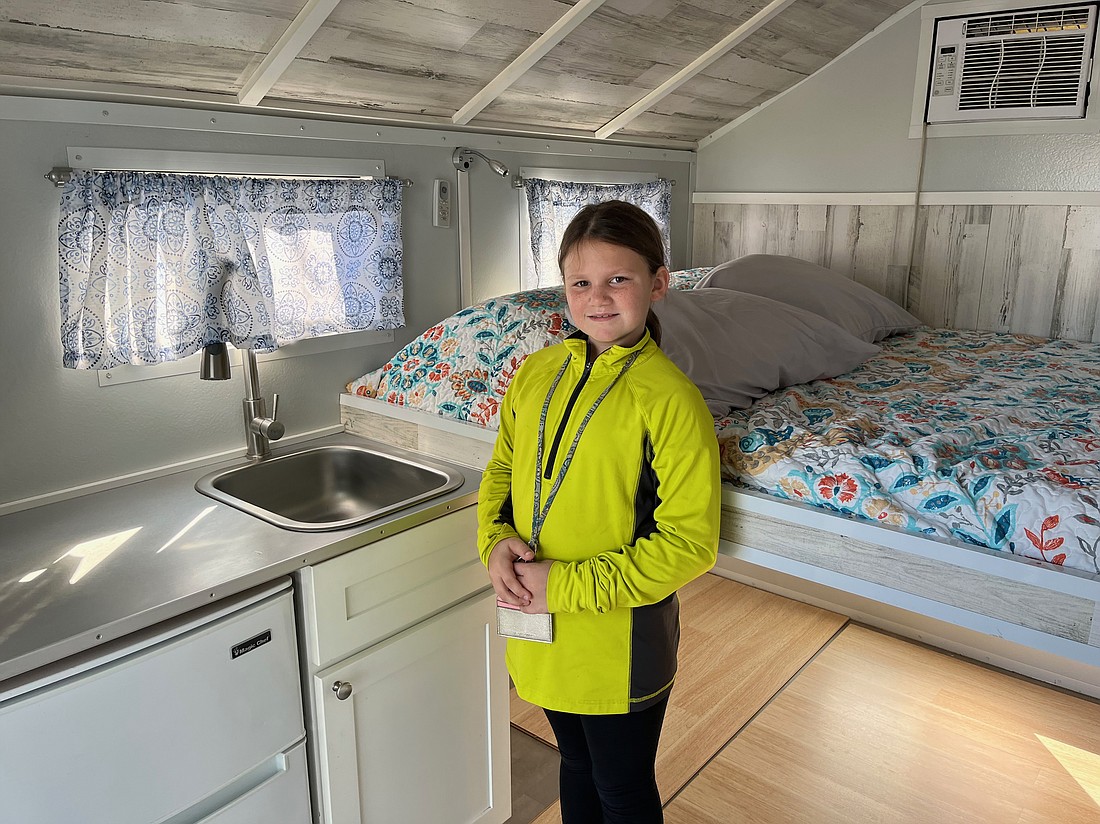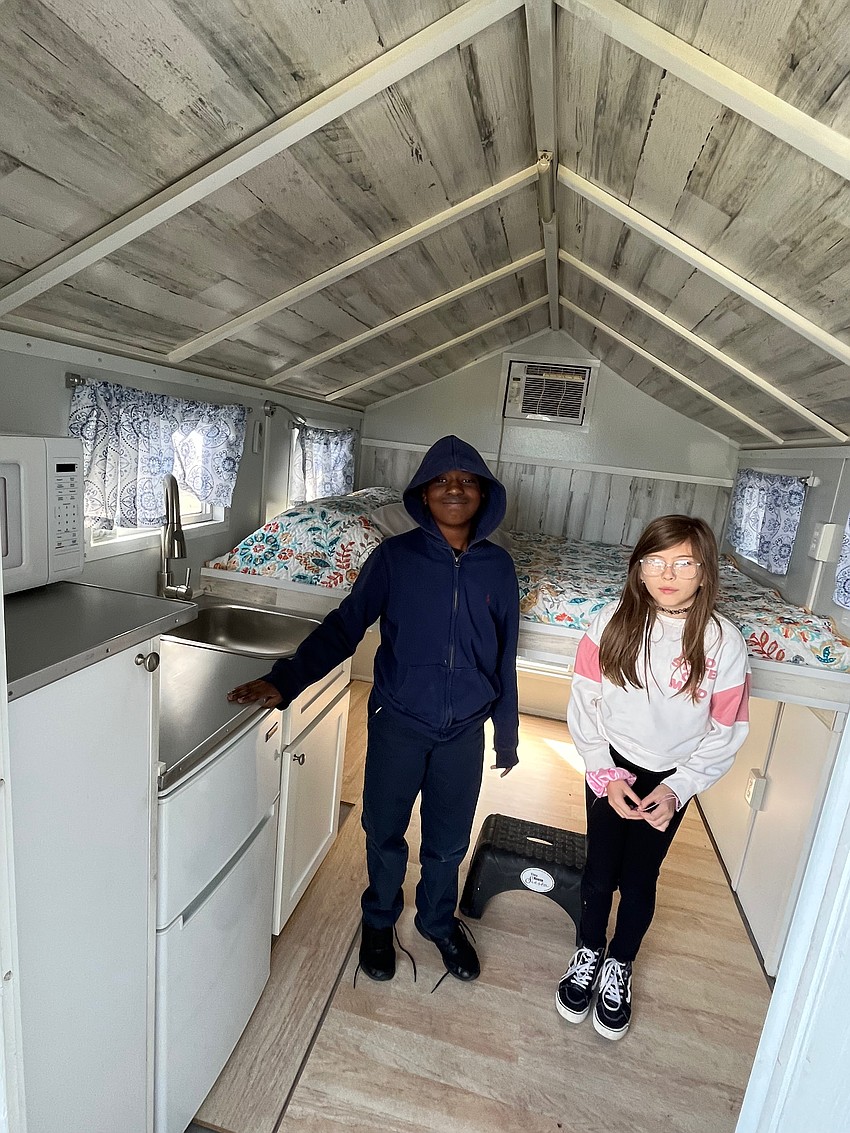- April 4, 2025
-
-
Loading

Loading

To even a Braden River Elementary third grader, the house that was towed into the school's parking lot Nov. 18 was easy to size up.
“That’s such a tiny house,” one student said.
“That’s a dog house,” said another.
“There’s no way that’s a house.” said a third student.
It was, indeed, a miniature house from Tiny House Siesta.
Braden River third graders have been working on their own 3D model tiny house models as part of a project-based learning assignment. They have been learning about the various benefits of a tiny house.
On Nov. 18, they were able to tour their subject.
That should help as the students design and create their models based on a list of client’s wants and needs.The clients were school staff members including the school’s principal, assistant principal, a reading specialist, a support specialist and a paraprofessional.

Each of the clients had different goals when it came to buying a tiny house. It might have been to save money, or to be able to take it to other locations, or to protect the environment, or to simply scale down.
Students worked in groups to create a design draft that would meet those specific needs.
The lesson incorporated math as students needed to deal with perimeter measurements and square football.
Working the groups sharpened skills such as teamwork.
“Sometimes they have to learn to compromise and give up their idea to someone else’s idea or they have to vote and the majority wins that vote,” said third-grade teacher Amber Walker. “This is trying to push social skills with them, such as listening to other people. It’s making sure everyone’s doing their part in the group.”
Third grader Channing Barker was excited to design a tiny house with his team.
“I love building stuff, and I’m great at it,” Barker said.
When Barker and third grader Raelynn Wilson went inside Tiny House Siesta’s tiny house Nov. 18, he was surprised to find what was inside.
In such a small house, they didn’t expect to see a queen size bed, a kitchen and a storage area that could fit a couch that would pull out into another queen size bed.
They started to think about changes they could make to their own designs. For example, Barker loved the idea of having a fold out couch that turns into a bed underneath a lofted bed. He also learned that the walls of a tiny house are made of steel, making them magnetic, so he can have curtains hanging from the windows using magnets.
Barker’s team has designed a two-story tiny house with a bathroom, living room and a bedroom on the second floor. A special feature of the tiny house is a balcony so the client can get fresh air in a comfortable area because the client likes nature.
Wilson and her team’s tiny house is made to be accepted by campgrounds. She said it will be yellow on the outside, and they hope to have two TVs, a kitchen area, a living area and a pullout couch under a lofted bed.
After students completed their initial designs, they presented them to their clients to receive feedback. They the proceeded to building their 3D models.
Michelle Cramer, a paraprofessional, and Courtney Walker, a curriculum coach, both posed as clients and were thrilled to see the innovative ideas.
Cramer wanted her tiny house to be more environmentally friendly. She wanted the roof of her tiny house to be covered in solar panels to power the tiny house. Cramer wanted a composting toilet, earth boxes to grow her own fruits and vegetables and a rain barrel. Most importantly, the tiny house needed to be able to be home to a family of five.
“I have just been blown away, even with just the blueprints,” Cramer said. “I’m super excited to see what these kids come up with for sure. It’s amazing the fine details they’re thinking of that we didn’t even give them. I didn’t talk about pets and they were like, ‘Don’t you have a dog Mrs. Cramer?’ so they added a spot for my dog.”

Courtney Walker wanted her tiny house to have wheels so she could go across the country. She wanted to have two beds so a guest could stay with her on her travels, and she also wanted places to show off her souvenirs. She expected her tiny house to be between 400 and 600 square feet.
Cramer and Courtney Walker said students asked pointed questions about the client’s wants and needs for their tiny house ranging from how big they wanted the tiny house to the color of it.
“They were asking me if I wanted a skylight,” Courtney Walker said. “That was really cool. I didn’t even bring that up, but they’re like, ‘Do you want a skylight so you can see the stars at night?’”
Once the project is completed, the client will choose which tiny house design they like best as well as which team worked most collaboratively in the class and which team displayed the most innovative house.